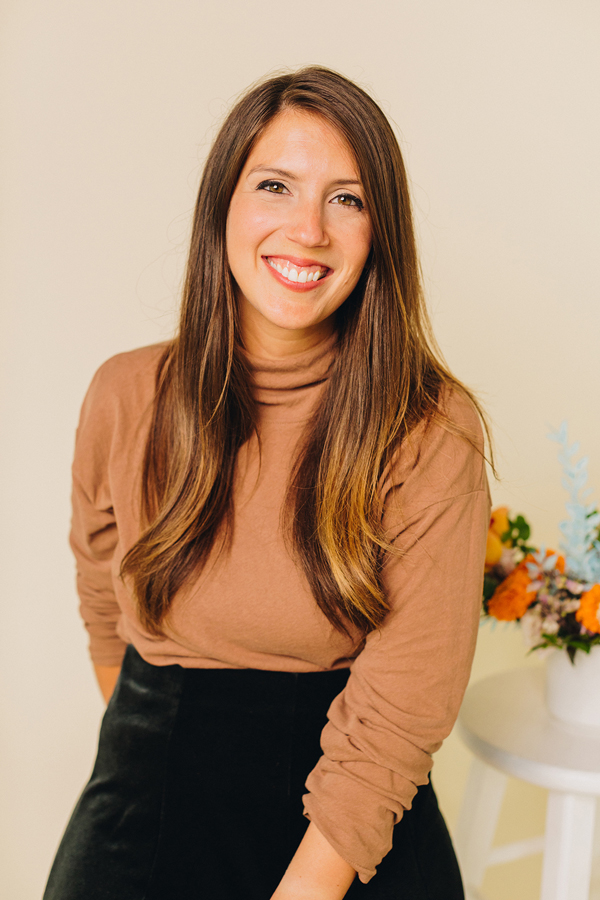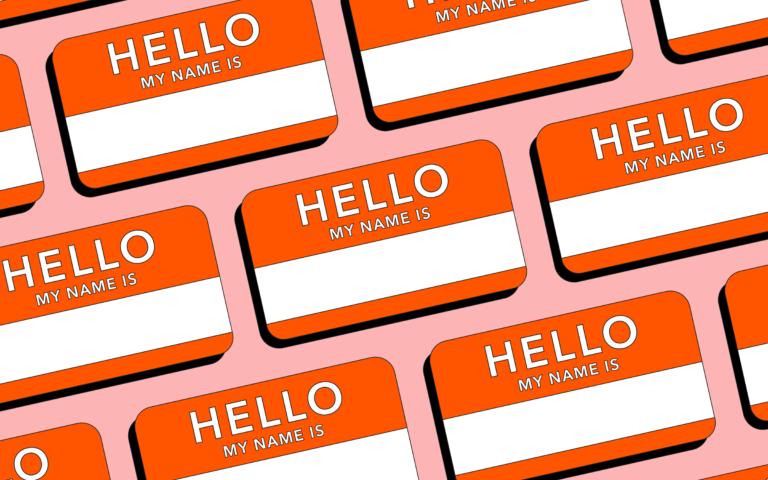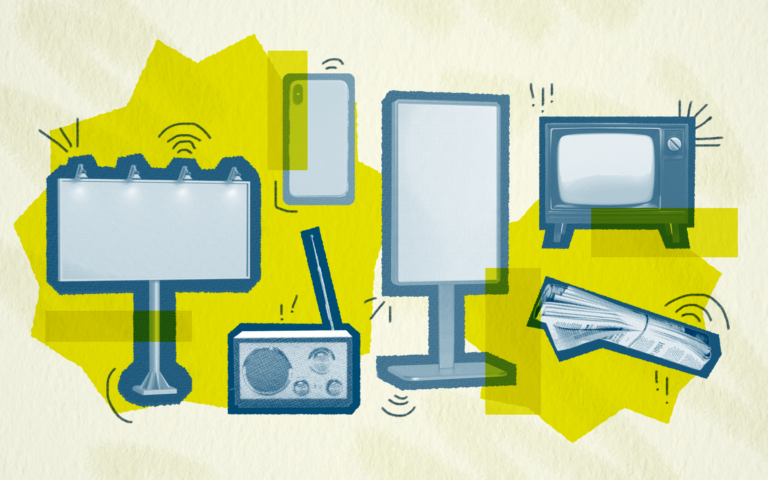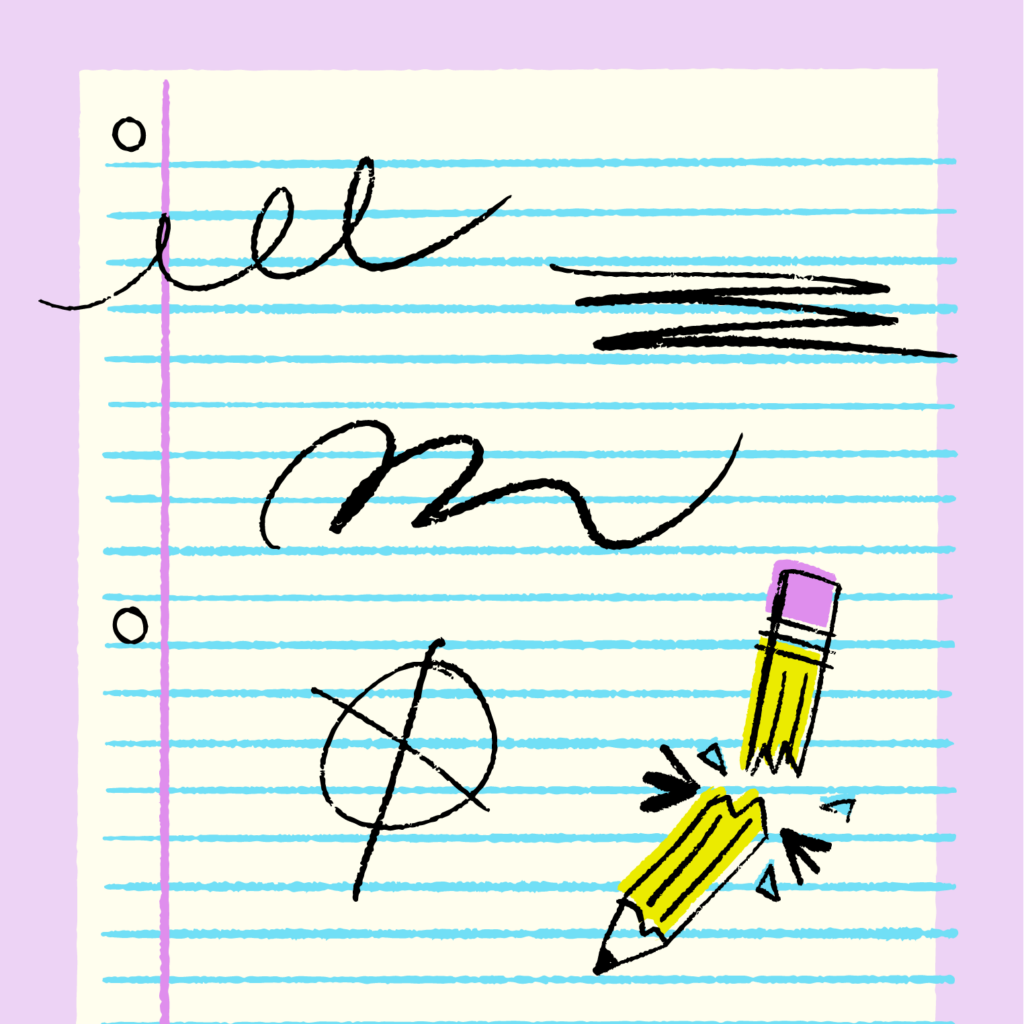
10 Ways to Overcome Fear of the Blank Page
We live in a world that sells quick solutions. On Instagram, I get hypnotized by videos of people drawing or hand-lettering. A few swoops here, a few swoops there, and boom, art! And not just art—art that has gone viral. Facebook is full of instant recipe creation videos. Whisk it, turn on the heat, and then enjoy! Every time I turn on Netflix, there are ten new shows I want to watch. When did they come out?
The truth is, for every finished product or “viral” process post, there were hours of prep work that no one wants to see. When we don’t get to see the hard work and failure that goes into finished products, our fear dials up even more.
We expect ourselves to encounter a blank page and make art, poetry, whatever, instantly and effortlessly. And when we don’t, it’s frustrating. We’re corny. We suck. But if this negative feedback loop is preventing you from being creative, try a few of the tactics below. They help me every time.
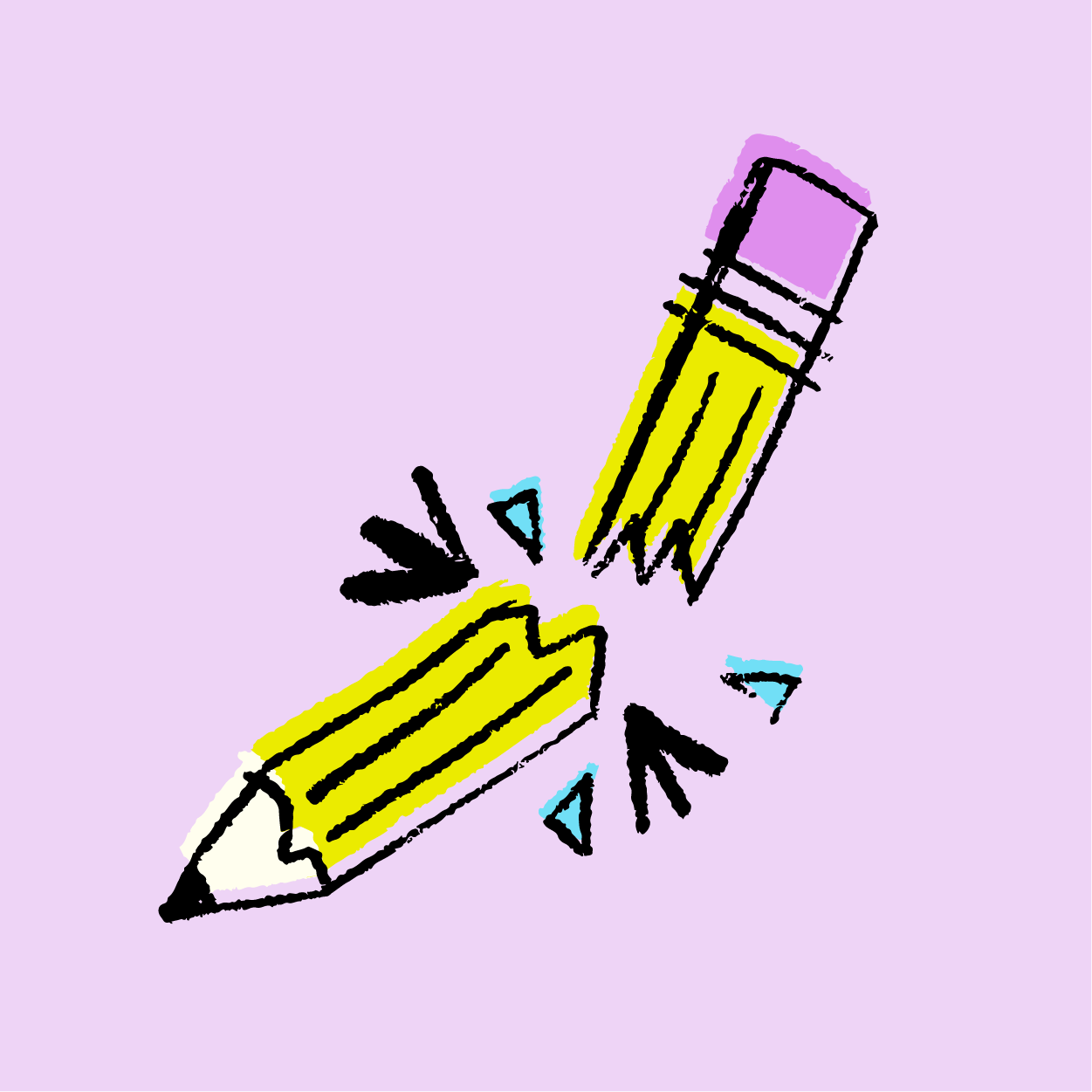
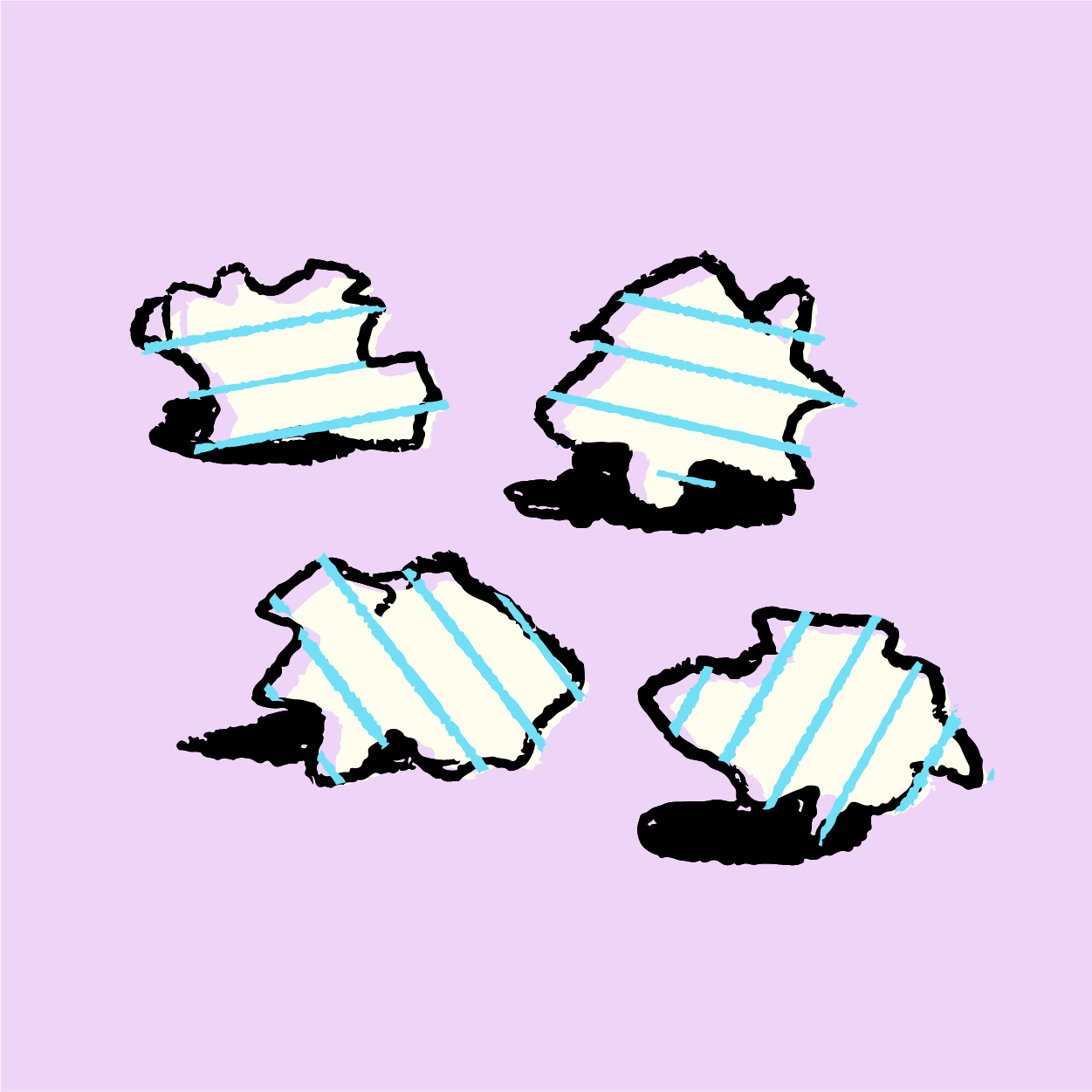
1. Start in the Middle
There’s a lot of pressure on the first line of any piece of writing. Probably the worst thing you can do while writing a story is dwell on all the brilliant first lines of literary history. Instead, start on the most substantial parts, the ones that required research: quotes, facts, details. Create the meat of the piece and then go back to the beginning. You’ll understand how to tee up the story once you know how it ends.
For artists and designers, this could involve focusing on a color scheme, a pattern or a feeling instead of the overall concept of your piece. Do you want to capture an unusual framing? Do you want to flip the script on colors of a common scene? Focusing on a stylistic goal can help you figure out what your concept should be.
2. Concept in a Notebook
After watching a few Skillshare classes, I noticed that almost all professional artists and designers make a bunch of conceptual sketches in a notebook before starting their final work. I found this fascinating, even if it seems obvious. As a writer, I always start with a concept. When I start something out, I create a huge scratch list of ideas, free associating to wade through silly ideas before picking out the good ones. As someone who draws, I never did this. I would just pick an idea and hack at it until it seemed good enough. I wasn’t exactly sure how free associating looked in other media until I saw how designers do it.
Concepting seems scary and intimidating. I’ve found that creative people think of it almost like a recipe. What’s the objective? What’s the emotion? What are the subjects? What colors, textures or tones will set the mood? Answering some basic questions will help you stitch together the theme from the outside in.
3. Find a Prompt, or Write Your Own
Creativity in my personal life is a lot harder than creativity at work. Why is this? Because at work I have an assignment. A client needs something, and they need it a certain way. At home, I have no assignment. Just a huge, terrifying field of endless possibilities. You can make your life easier by seeking out an assignment for yourself. I started getting prompts by joining drawing challenges on Instagram. If you’re a writer, there are a lot of storytelling contests out there. Seek these out, and pay attention to which prompts inspire you, and which don’t. Some aren’t going to play into your style, and knowing what isn’t your style will help you figure out what is. Then, you can start writing yourself prompts. This is a good way to contribute to your creative process when you don’t actually feel like creating. Start a list of prompts in your phone for when you do feel like making something.
4. Find “Badspiration”
You probably have a healthy diet of creative inspiration. Maybe you read books that get turned into movies. Maybe you follow the people who create illustrations for The New Yorker. This is definitely helpful! But don’t forget to take in some trash. If you only consume great media, you’re on the road to paralysis. Watch some bad TV. Enjoy a terrible movie. Note art that you don’t love on Pinterest. This will help silence your inner critic. You’ll see that you don’t like everything that’s out there in the world, and that’s ok. Think about how you view the people who made work that isn’t your taste. Do you judge them? Or do you envy them? They were brave enough to finish something and put it out there, and it’s gone on to inspire people. Silencing your criticism of others will help you see yourself with more compassion.
5. Procrastinate with Another Creative Task
If you don’t want to write, draw. If you don’t want to draw, cook. If you don’t want to edit your own work, write in your journal. Either way, you’re circulating ideas and proving to yourself that you can make—and finish—things. When you start to see yourself as someone who puts things off, you start to lose confidence in your ability to deliver. And that only adds to the fear monster.
Beyond that, when you have at least two creative projects, it takes the heat off of both of them. When you count on one project to justify your whole life, it can become disproportionately scary.
6. Create a Daily Routine
There is nothing that counters the task of creating art quite like making it another banal part of your daily routine. Pick a half hour time slot a day to devote to something. It might seem like nothing, but 365 x 30 minutes = 10,950 minutes per year. Time is going to go by whether you make stuff or not. You might as well be making something slowly rather than nothing at all.
7. Learn How to Edit, Not Just Create
I watched Annie Liebovitz’s MasterClass on photography last year, and one of the most interesting episodes is when she talks about self-editing. Every so often, she goes through a huge pile of her old photos to see if there are new ways to look at them. She tends to look at her own work more charitably once time has passed, and finds herself pleasantly surprised by something she’d formerly looked over. Take at least one day a month to look through your old vault to see if there’s something you gave up on too soon. Learn how to revisit work and edit it, fluff the pillows a bit, and bring it back out into the world.
8. Be an Obsessive List Keeper
I told my husband the other day that I think 95% of being a creative person is keeping lists. Somehow I missed that memo growing up. Now, I write down all my ideas. I write down funny things people say at work. I write down concepts for drawings or stories. I write down quotes I like. I keep an obsessive set of Pinterest boards. As your brain stops working at lightning speed, you need more lists to keep track of inspiration and ideas.
I once heard Abbi and Ilana from Broad City say that their show was inspired by a spreadsheet of quotes they’d kept over the years. It added authenticity to their dialogue. Another famous list keeper was the late Harris Wittels (RIP), a comedian who wrote for Parks and Recreation and Master of None. He kept a list of half-baked jokes on his phone called his “Phone Corner,” which later morphed into “Foam Corner.” After he died, his sister read some of the unfinished jokes in her memoir about him, and getting this peek into his working thought process was so special.
9. Ask for Feedback
I used to fear feedback. What if someone blew up my whole idea? What if they pointed out it sucked? That I sucked? It’s really easy to catastrophize how you think the feedback process will go. Now that I’ve been on the receiving end of tons of feedback for at least ten years—clients, editors, legal teams—I don’t think there’s much feedback that could phase me (catty internet commenters aside). But even feedback that sends you all the way back to the drawing board gives you a thicker skin. For the most part, feedback tends to be minor and constructive, not destructive. Someone might solve a gap in your piece. They might provide insight that levels it up from a 9 to a 10. Now when I draw, I always ask my husband for a final look. He always points out something I had long stopped noticing.
If you want feedback, pick a friend who is in the same field as you and ask if they’ll swap pieces for feedback regularly. Or take a class to get feedback from a teacher, or a group. You can also use Instagram and Twitter to gage people’s reaction to different ideas. You might find that some jokes or drawings do a lot better than others online, and this can help you hone you style. This is what a lot of comedians do now to shape their acts.
10. Create a Monthly Goal
Thinking macro scale can help on the day-to-day basis. Pick one monthly goal and stick to it. A couple ideas:
- Take one Skillshare class
- Learn one new skill on your creative software
- Submit to one contest a month
Then use bullet journaling on a day-to-day basis to conquer the smaller pieces.
I hope this helped. Good luck creating!
Artwork by Sean Cooley
